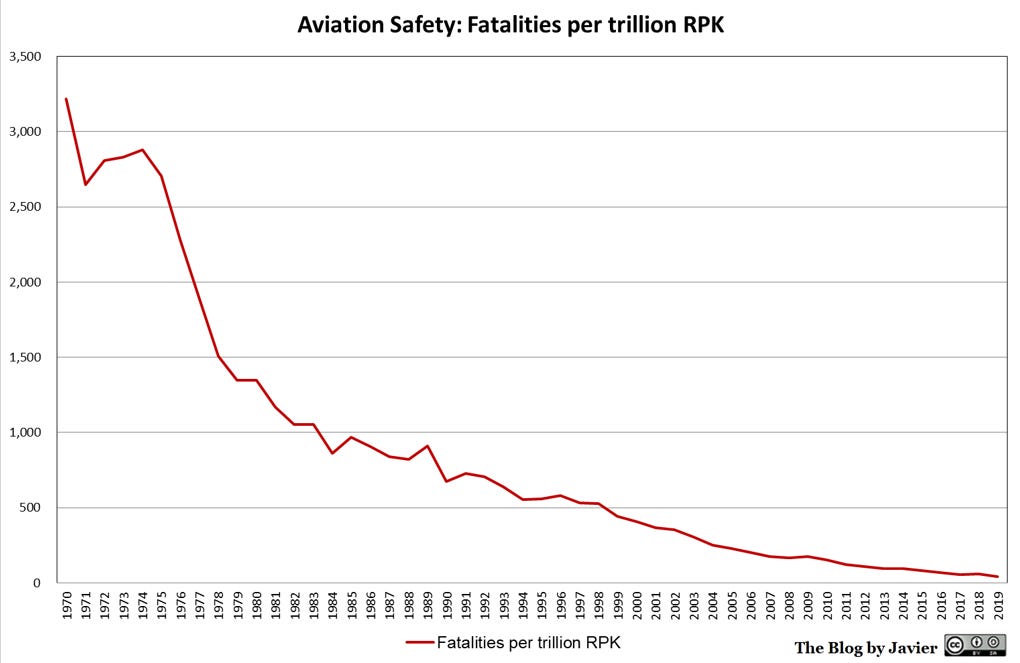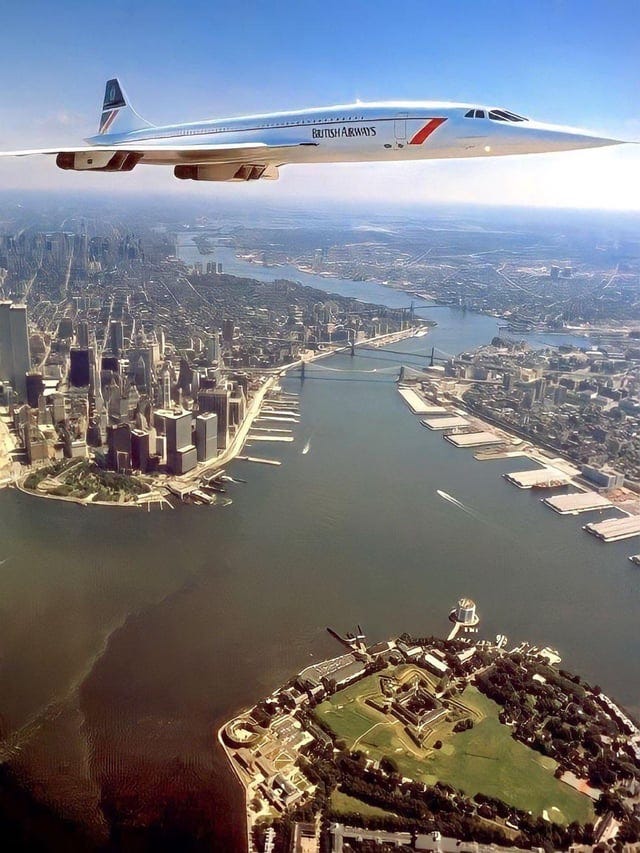Flying Abundance
Get 10.8 flights from New York to London today for the time price of one in 1970, and be 80.4 times safer.
In 1970 the price for a roundtrip ticket from New York to London was $550. Blue-collar workers at the time were earning around $3.93 an hour in compensation (wages and benefits). This suggest a time price of around 140 hours. Today, the price has dropped to around $467. Blue-collar workers are now earning closer to $36.15 an hour, putting the time price at 12.9 hours. The time price has fallen by 90.8 percent. For the time required to earn the money to buy one flight in 1970, you can get 10.8 flights today. Flying abundance has increased by 980 percent, compounding at an annual rate of 4.5 percent over the last 54 years. During this same period global population increased by 4.3 billion or 117 percent, from 3.7 billion to over 8 billion. Every one percent increase in population corresponded to an 8.4 percent increase in flying abundance.
Now transcontinental flights are affordable for almost everyone. Free-market entrepreneurial capitalism isn’t about making more luxuries for the wealthy, it’s about making luxuries common for the average person.
While it is true that the 1970s flights may have had roomier cabins and better dining, flying today is dramatically safer. The Aviation Safety Network tracks airline accident data. Revenue Passenger Kilometer (RPK) is a standard metric in aviation. Using this data, Javier Mediavilla plotted the ratio of fatalities per trillion RPK from 1970 to 2019 using five-year averages. The ratio decreased by 98.76 percent from 3,218 to 40 over this 49-year range. Flying is over 80.4 times safer today than 1970. Safety has been improving at a compound rate of around 9.37 percent a year.
Considering both the time price and safety, flying has become 868 times more abundant since 1970. (10.8 x 80.4 = 868)
If there had been no innovation in flying since 1970, this JFK to Heathrow fare would be around $5,059 today. Only the rich could afford these flights back in 1970. It takes around seven hours to make the 3,442 mile flight. The supersonic Concorde would do it in under three hours. But it is no longer active.
Boom Supersonic, a private company based in Colorado, aims to bring commercial supersonic flights back to US airlines by 2029. Maybe we can get back to spending half as much time on flights and using our most valuable resource for other value-creating activities.
The Wright brothers launched the era of aviation on December 17, 1903 with a 12-second flight. Since then aeronautical engineers and market innovators have made the experience safer, faster, and much more affordable.
We describe the process of transforming scarcities into abundances in our new book, Superabundance, available at Amazon. You can read more about the book at superabundance.com. There has never been a better time to create more life.
Gale Pooley is a Senior Fellow at the Discovery Institute and a board member at Human Progress. “Gale Pooley is the world’s leading authority on time prices.” - George Gilder








Yes, we may complain about the leg room and the bag of pretzels that are no longer handed out, but for a 90 percent reduction in cost…sign me up. I’ll bring my own pretzels.
This is just continued evidence that the power of pricing signals forces innovators to find ways of doing more with less. In this case, transporting humans in tubes of metal that require fewer parts, less maintenance, last longer, and requires less and less fossil fuels per mile: https://www.lianeon.org/p/pricing-progress
All while doing it safer than ever before. Incredible.